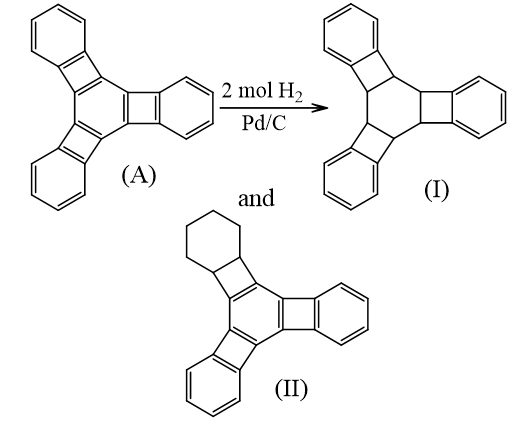Physics-
General
Easy
Question
Two pulses in a stretched string, whose centers are initially 8 cm apart, are moving towards each other as shown in the figure. The speed of each pulse is 2 cm/s. After 2 s the total energy of the pulses will be :–

- Zero
- Purely kinetic
- Purely potential
- Partially kinetic and partially potential
The correct answer is: Purely kinetic
Related Questions to study
Physics-
A train moves towards a stationary observer with speed 34 m/s. The train sounds a whistle and its frequency registered by the observer is ƒ1. If the train's speed is reduced to 17 m/s, the frequency registered is ƒ2. If the speed of sound is 340 m/s then the ratio  is:–
is:–
A train moves towards a stationary observer with speed 34 m/s. The train sounds a whistle and its frequency registered by the observer is ƒ1. If the train's speed is reduced to 17 m/s, the frequency registered is ƒ2. If the speed of sound is 340 m/s then the ratio  is:–
is:–
Physics-General
Physics-
The equation of a wave on a string of linear mass density 0.04 kg m–1 is given by y = 0.02(m) sin  The tension in the string is:
The tension in the string is:
The equation of a wave on a string of linear mass density 0.04 kg m–1 is given by y = 0.02(m) sin  The tension in the string is:
The tension in the string is:
Physics-General
Chemistry-
Statement 1:Compound (I) is formed not (II)

Statement 2:Due to the reduction of central ring, 3 four-membered anti-aromatic rings become stable to form (I). In (II), due to the reduction of terminal ring, only one anti-aromatic ring can be stabilized
Statement 1:Compound (I) is formed not (II)

Statement 2:Due to the reduction of central ring, 3 four-membered anti-aromatic rings become stable to form (I). In (II), due to the reduction of terminal ring, only one anti-aromatic ring can be stabilized
Chemistry-General
Chemistry-
Which of the following dienes and dienophiles could be used to synthesise the following compound (A) ?
A) 
Which of the following dienes and dienophiles could be used to synthesise the following compound (A) ?
A) 
Chemistry-General
Chemistry-
 Which reagent cannot be used for the above conversion?
Which reagent cannot be used for the above conversion?
 Which reagent cannot be used for the above conversion?
Which reagent cannot be used for the above conversion?
Chemistry-General
Chemistry-
Which of the following statements is correct about the following reactions?

Which of the following statements is correct about the following reactions?

Chemistry-General
Chemistry-
 -3,6-Dimethyl oct-4-ene (A) exists in two diastereomers (I)and (II)
-3,6-Dimethyl oct-4-ene (A) exists in two diastereomers (I)and (II)
A) 
I) 
II) 
If the stereochemistry about the double bond in(A) is  , two diastereomers (I) and (II) exist as shown above
, two diastereomers (I) and (II) exist as shown above
Which statement is correct?
 -3,6-Dimethyl oct-4-ene (A) exists in two diastereomers (I)and (II)
-3,6-Dimethyl oct-4-ene (A) exists in two diastereomers (I)and (II)
A) 
I) 
II) 
If the stereochemistry about the double bond in(A) is  , two diastereomers (I) and (II) exist as shown above
, two diastereomers (I) and (II) exist as shown above
Which statement is correct?
Chemistry-General
Chemistry-
Arrange the following alcohols in the decreasing order of dehydration with conc.
i) 
ii) 
iii) 
iv) 
Arrange the following alcohols in the decreasing order of dehydration with conc.
i) 
ii) 
iii) 
iv) 
Chemistry-General
Chemistry-
Give the decreasing order of the stability of the following or increasing order of heat of combustion
I) 
II) 
III) 
Give the decreasing order of the stability of the following or increasing order of heat of combustion
I) 
II) 
III) 
Chemistry-General
Chemistry-
Which one is the most easily dehydrated?
I) 
II) 
III) 
Which one is the most easily dehydrated?
I) 
II) 
III) 
Chemistry-General
Chemistry-
 The products (c) and (D) are:
The products (c) and (D) are:
 The products (c) and (D) are:
The products (c) and (D) are:
Chemistry-General
Chemistry-
In which of the following, the  is maximum?
is maximum?
In which of the following, the  is maximum?
is maximum?
Chemistry-General
Chemistry-
In the reaction:

Reagent used is:
In the reaction:

Reagent used is:
Chemistry-General
Chemistry-
 Intermediate (B) and product (C) are:
Intermediate (B) and product (C) are:
 Intermediate (B) and product (C) are:
Intermediate (B) and product (C) are:
Chemistry-General
Physics-
The angular frequency of small oscillations of the system shown in the figure is

The angular frequency of small oscillations of the system shown in the figure is

Physics-General



